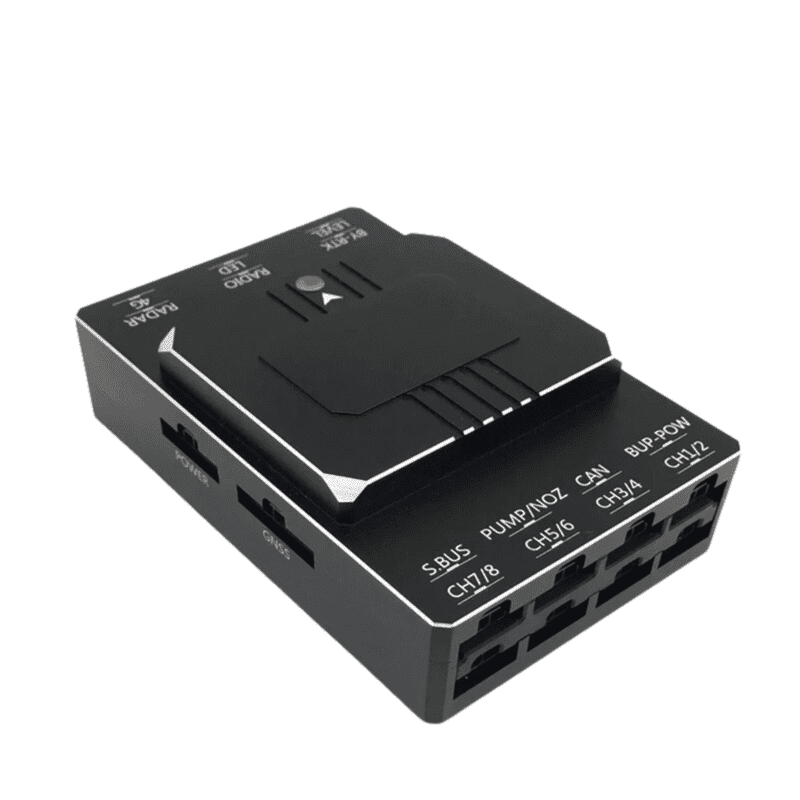SparkNavi Drone Flight Controller and GNSS/INS Made in Taiwan: Accuracy Navigation for Drones
SparkNavi Drone Flight Controller and GNSS/INS Made in Taiwan: Accuracy Navigation for Drones
Blog Article
Recognizing the Necessary Features and Functions of a Drone Trip Controller for Optimum Aerial Efficiency
The trip controller serves as the critical part in a drone's style, managing its movements and guaranteeing stability through a sophisticated interplay of information and sensors processing. With improvements in technology, the landscape of flight controllers is quickly developing, motivating a more detailed evaluation of what genuinely specifies ideal functionality in this critical system.
Introduction of Trip Controllers
When discovering the world of drone modern technology, recognizing trip controllers is necessary for both specialists and enthusiasts alike. Flight controllers serve as the brain of the drone, managing its activities and making sure security during flight (SparkNavi drone flight controller and GNSS/INS made in taiwan). They refine information from different sensors, including gyroscopes, measures, and accelerometers, to keep balance and reply to pilot inputs effectively
The design of flight controllers can vary dramatically, ranging from fundamental versions made for entry-level drones to advanced systems equipped with advanced functions for expert applications. The combination of GPS capacities makes it possible for accurate navigation and positioning, while programmable firmware allows customers to tailor flight features to match their details demands.
Moreover, flight controllers are crucial in assisting in interaction between the drone and the remote control, allowing real-time adjustments and telemetry data transmission. Understanding the different sorts of flight controllers, consisting of multi-rotor, fixed-wing, and crossbreed systems, is essential for selecting the appropriate model for an offered application. Inevitably, a detailed understanding of flight controllers not just boosts the flying experience but also makes the most of the efficiency and security of drone operations.
Trick Features of Trip Controllers
Trip controllers play a pivotal duty in managing a drone's flight dynamics by carrying out several crucial functions that make certain stability and responsiveness. One of the primary functions is the stabilization of the drone's orientation and altitude. This is achieved with the assimilation of different sensors, including gyroscopes, barometers, and accelerometers, which constantly monitor the drone's position and movement.
.jpg)
One more essential feature is the handling of control inputs from the pilot or independent systems. The trip controller analyzes these inputs and adjusts the drone's motor rates accordingly to accomplish the preferred trip course. This includes handling roll, pitch, and yaw, which are essential for ability to move.
Additionally, trip controllers are furnished with sound mechanisms. These functions are developed to react to important situations, such as reduced battery levels or loss of signal, by launching predefined actions like going back to the launch factor or floating in location.

Important Attributes to Think About
Various important functions should be thought about when picking a drone flight controller to guarantee optimal performance and dependability. One important element is the controller's processing power, which identifies its capacity to deal with intricate flight formulas and real-time information processing. A higher processing capacity boosts responsiveness and stability throughout trip.
Another essential feature is the number of supported flight settings. A versatile flight controller need to provide numerous settings, consisting of acro, elevation hold, and GPS-assisted modes, providing to different my response pilot ability levels and functional scenarios. Additionally, the visibility of built-in safety features, such as fail-safes and geofencing, can considerably enhance operational protection.
Compatibility with numerous interaction procedures is likewise essential, as it guarantees smooth combination with other gadgets and peripherals, such as remote controllers and telemetry systems. Additionally, the controller's firmware must be user-friendly and consistently upgraded to integrate brand-new attributes and optimizations.
Combination With Sensing Units and Equipments
A trip controller's performance is greatly affected by its capacity to integrate with various sensors and systems. This combination is essential as it makes it possible for the flight controller to get real-time data necessary for effective flight monitoring. Secret sensing units consist of GPS, inertial dimension devices (IMUs), barometers, and magnetometers, each providing crucial info concerning the drone's altitude, setting, and positioning.

Additionally, advanced flight controllers support integration with payload systems, including electronic cameras and other sensors, allowing improved functionalities such as autonomous navigation and challenge evasion. This interconnectedness not only improves the drone's operational capacities however also increases its application potential throughout different sectors, from aerial photography to agricultural monitoring. Hence, a well-integrated trip controller is fundamental for accomplishing ideal aerial efficiency and ensuring the dependability of drone procedures.
Tips for Optimizing Performance
To maximize the efficiency of your drone, numerous crucial strategies can be utilized that emphasis on maximizing both hardware and software program elements. Ensure that the trip controller firmware is up to date.
Proper calibration reduces drift and improves flight stability, specifically throughout complex maneuvers. High-quality click here to read props can reduce drag and boost trip time.
In addition, optimize your drone's weight by reducing unneeded hauls. A lighter drone not only carries out much better however also expands battery life. Tweak your flight settings, including PID (Symmetrical, Integral, Derivative) values, to accomplish responsive and smooth handling. By applying these techniques, drone operators can considerably enhance airborne performance, bring about an extra delightful and reliable flying experience.
Conclusion
In verdict, a thorough understanding of drone flight controllers is critical for enhancing airborne performance. By prioritizing these elements, drivers can dramatically boost the performance and reliability of their drone systems in diverse applications.
Flight controllers serve as the mind of the drone, orchestrating its activities and ensuring stability throughout trip.Trip controllers play a critical duty in managing a drone's trip dynamics by carrying out several essential functions that make sure security and responsiveness. The trip controller analyzes these inputs and readjusts the drone's motor rates appropriately to achieve the preferred trip path.Many important features should be taken into account when selecting a drone flight controller to make certain ideal efficiency and integrity. Therefore, a well-integrated flight controller is Recommended Site basic for attaining optimal aerial performance and making certain the reliability of drone procedures.
Report this page